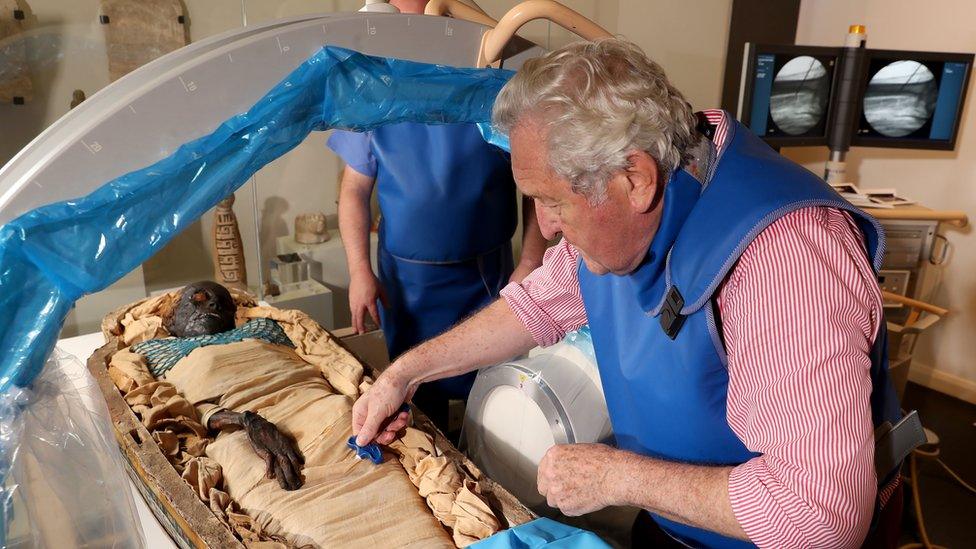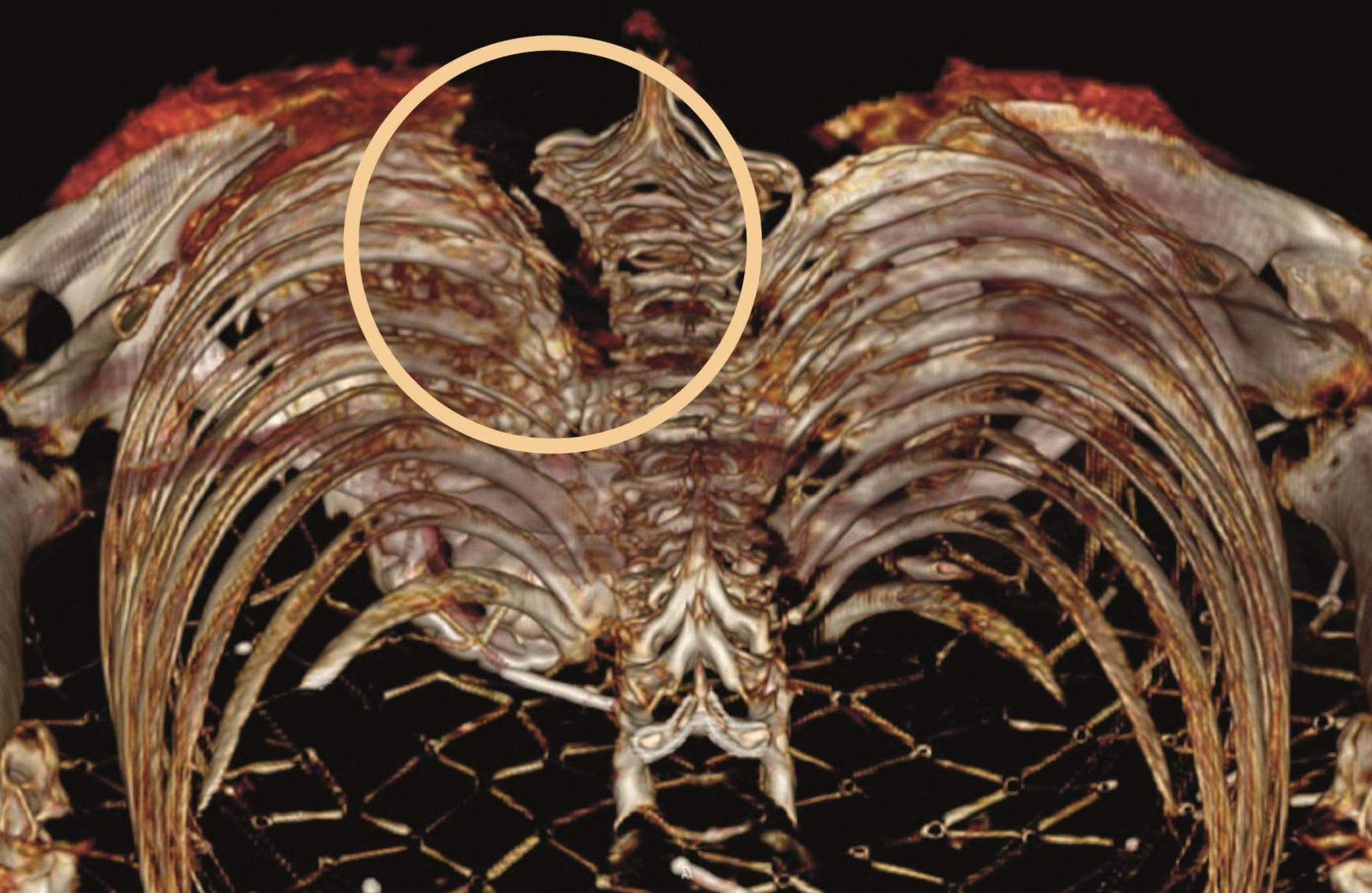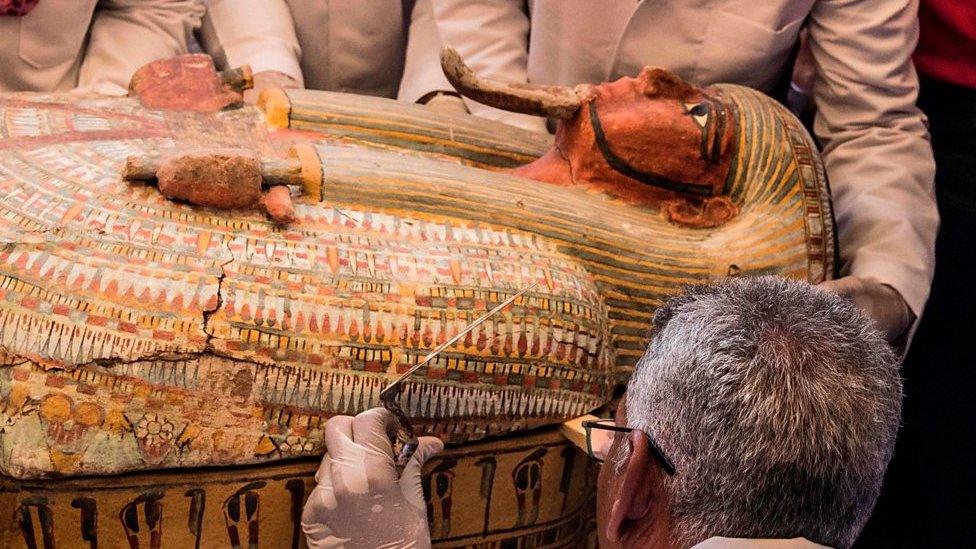Belfast's Egyptian mummy 'may have died in violent knife attack'
- Published

Researchers used a portable x-ray machine and DNA sampling to shed new light on Takabuti's demise
A team of experts appear to have solved a mystery that has confounded academics - and the public - for decades.
How did the Egyptian mummy on display in the Ulster Museum die?
Now, following recent state-of-the-art testing, it appears Takabuti was killed by being stabbed in the back.
Not only that, but academics now believe she may not even have been Egyptian as DNA tests have revealed she is more genetically similar to Europeans than modern Egyptians.
Scans and forensic testing have shed new light on the the death of the mummy, who was brought to Belfast in 1835.
'It's astounding to find out she died violently'
The findings are being made public on the 185th anniversary of her unwrapping in 1835.
Prof Rosalie David, an Egyptologist from the University of Manchester, said the study adds to our understanding of Takabuti and the wider historical context of the times in which she lived.
"The surprising and important discovery of her European heritage throws some fascinating light on a significant turning-point in Egypt's history," she said.

"This study, which used cutting-edge scientific analysis of an ancient Egyptian mummy, demonstrates how new information can be revealed thousands of years after death.
"Our team - drawn from institutions and specialisms - was in a unique position to provide the necessary expertise and technology for such a wide-ranging study."
Prof Eileen Murphy, a bioarchaeologist from Queen's University in Belfast, described the results as "astounding".
"It is frequently commented that she looks very peaceful lying within her coffin but now we know that her final moments were anything but and that she died at the hand of another."
In 2009, a BBC Northern Ireland documentary Show Me The Mummy recreated what Takbuti would have looked like.
It also discovered a mysterious object in her body cavity, that they may have been her heart.
It has now been discovered that this was in fact material used to pack the knife wound while her heart has now been identified as intact and perfectly preserved.

What we know about Takabuti
She lived in Thebes during the 25th Dynasty, about 2,600 years ago
Her father, Nepare, was a priest in the Temple of Amun, Karnak, and her mother, Tasenirit, a house mistress
Takabuti was assumed to be married as she was mistress of a house in Thebes
She died in her 20s and was buried near the Temple of Hatshepsut
She was 5ft tall
Takabuti died from a stab wound to the back
Takabuti's mother was of European or Caucasian descent. However it is not possible to say, from these recent findings, that Takabuti was a foreigner in Egypt and came there from elsewhere
Her heart is present: previous examinations had missed it
She had an extra tooth (33 instead of 32) something which only occurs in 0.02% of the population
She had an extra vertebra which only occurs in 2% of the population

Dr Greer Ramsey, curator of archaeology at National Museums NI, said advances in scientific techniques made the new findings possible.
"In recent years she has undergone x-rays, CT scans, hair analysis and radio carbon dating.
"The latest tests include DNA analysis and further interpretations of CT scans which provides us with new and much more detailed information."
He added: "The significance of confirming Takabuti's heart is present cannot be underestimated as in ancient Egypt this organ was removed in the afterlife and weighed to decide whether or not the person had led a good life.
"If it was too heavy it was eaten by the demon Ammit and your journey to the afterlife would fail."
Takabuti was acquired in the ancient Egyptian city of Thebes (now Luxor) by Thomas Greg from Holywood, County Down, and brought to Belfast in 1834.
Since being unveiled at the Ulster Museum, the 'young' mummy - she is thought to have died in her 20s - has been the star attraction for visitors.
The recent project was supported by funding from Friends of the Ulster Museum.
- Published20 October 2019

- Published23 November 2019

- Published22 October 2019